Photos by Jonathan Sharp
Text by Pete Vack
The display of the three B.A.T. Alfas was held at the Phillips Auction House in Berkeley Square, London and only displayed for four days, November 20-23. Jonathan Sharp attended on a Wednesday afternoon and here is the second of three reports.
Oh, poor B.A.T. 7. It was, in our opinion, the best of the trinity, a refined 5 with an even more dramatic aft that was the quintessence of coachbuilder’s art. Just looking at the various views of those remarkable appendages is awe inspiring. How did they do it?
About a year after it was shown at Turin in the spring of 1955, someone came along cut them off. Those beautiful, inspiring wings. Let’s let the late Strother MacMinn and his cohort Robert Henry Gurr tell us what they thought about the car at the time: (Road & Track, July, 1955, Panel Discussion on Automotive Styling.)
MacMinn: The most fantastic coordination between aerodynamics and styling that has happened yet and it is exciting because it appears to be honest in the most dramatic possible way, or vice-versa. The three elliptical profiles at the front blending into the rising and turned up fins at the rear, and the gradually enclosed cab with its extreme tumblehome, all combine to give a totally organized and continuous sense of motion in every surface of the whole car. This looks to be true elegance in design.
Gurr: Without a doubt the B.A.T. 7 is the most intriguing thing ever hammered out of a piece of aluminum. So intriguing in fact that when seen moving about with other cars the effect is extremely confusing. This is the type of design that the purist hides behind despite the flaws in it. The biggest error is the multitude of gaps, cracks and slots which do not help the original theme of the rhythm of air it deflects in passage.
While MacMinn is well-known to our readers, Robert Henry Gurr’s career was recently profiled by Patrick G. Kelley in his new book Imagine (click here to read more). Gurr authored the book How to Draw the Cars of Tomorrow in 1952 and later worked for Walt Disney, helping design the Monorail system.
BAT 7 appeared at the 1955 Turin show, and was purchased by Alfa Romeo for 3,850,000 Lira (about $6200) in 1955 and then sold in the U.S.A. The possible buyer was Al Williams, who drove the car at Palm Springs in early 1955, which was captured by an unknown photographer and published in the new Sports Cars Illustrated. According to an article by MacMinn in AQ V33-3, the fins were cut off the car in an attempt to make it easier to drive on the street. Alfa enthusiast Bob Schnittger took some photos of the car at the time, and they were published in Joe Benson’s Illustrated Alfa Romeo Buyer’s Guide. In the 1980s, Sebastian Dominguez and Steve Tillack began the restoration and the very difficult reconstruction of the missing fins. It was ready for the 1989 B.A.T. reunion at Pebble Beach.
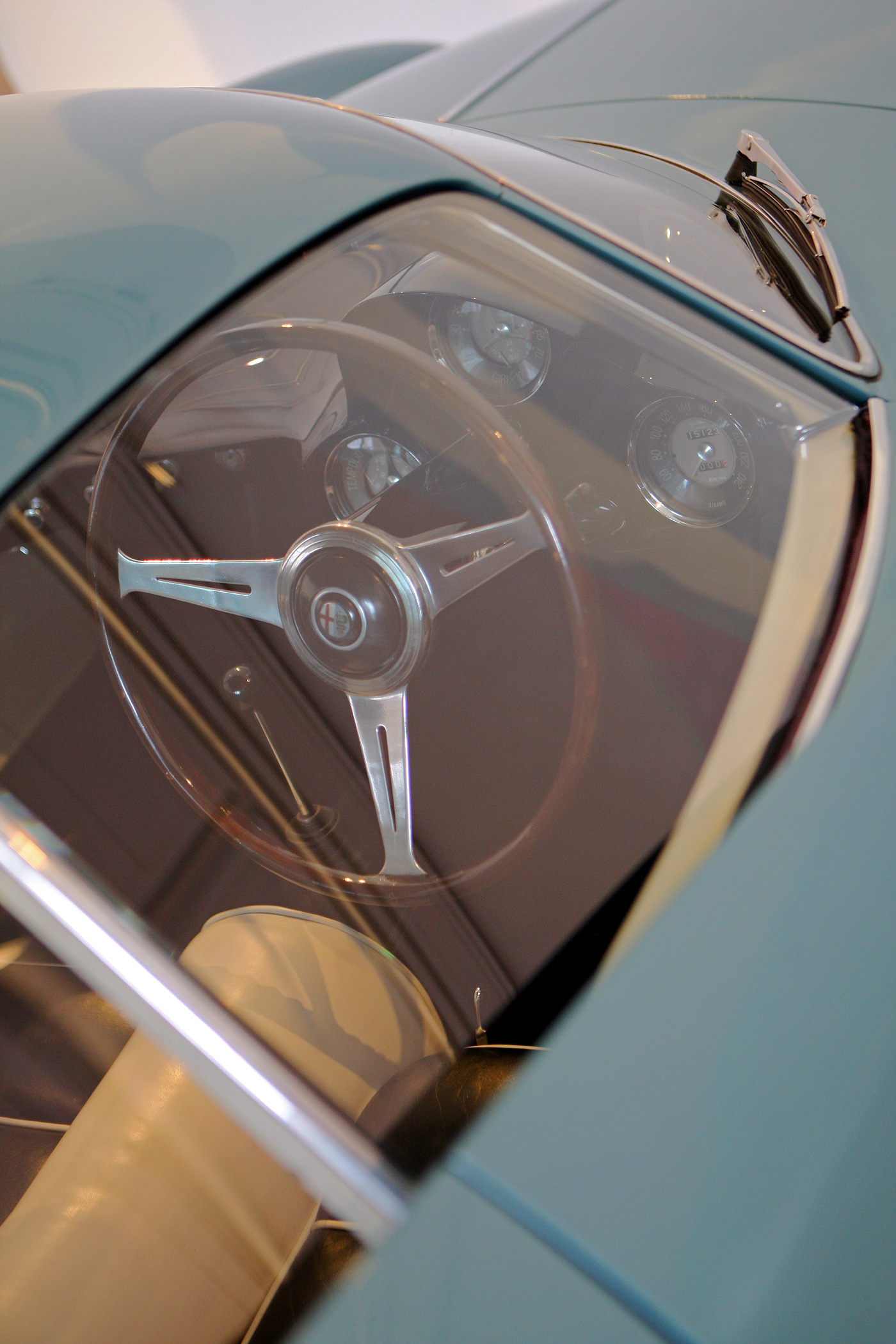
B.A.T. 7 is the only Bertone study with right hand drive, but did not go to the U.K. It was sold to Alfa Romeo then to a restaurateur in the U.S.
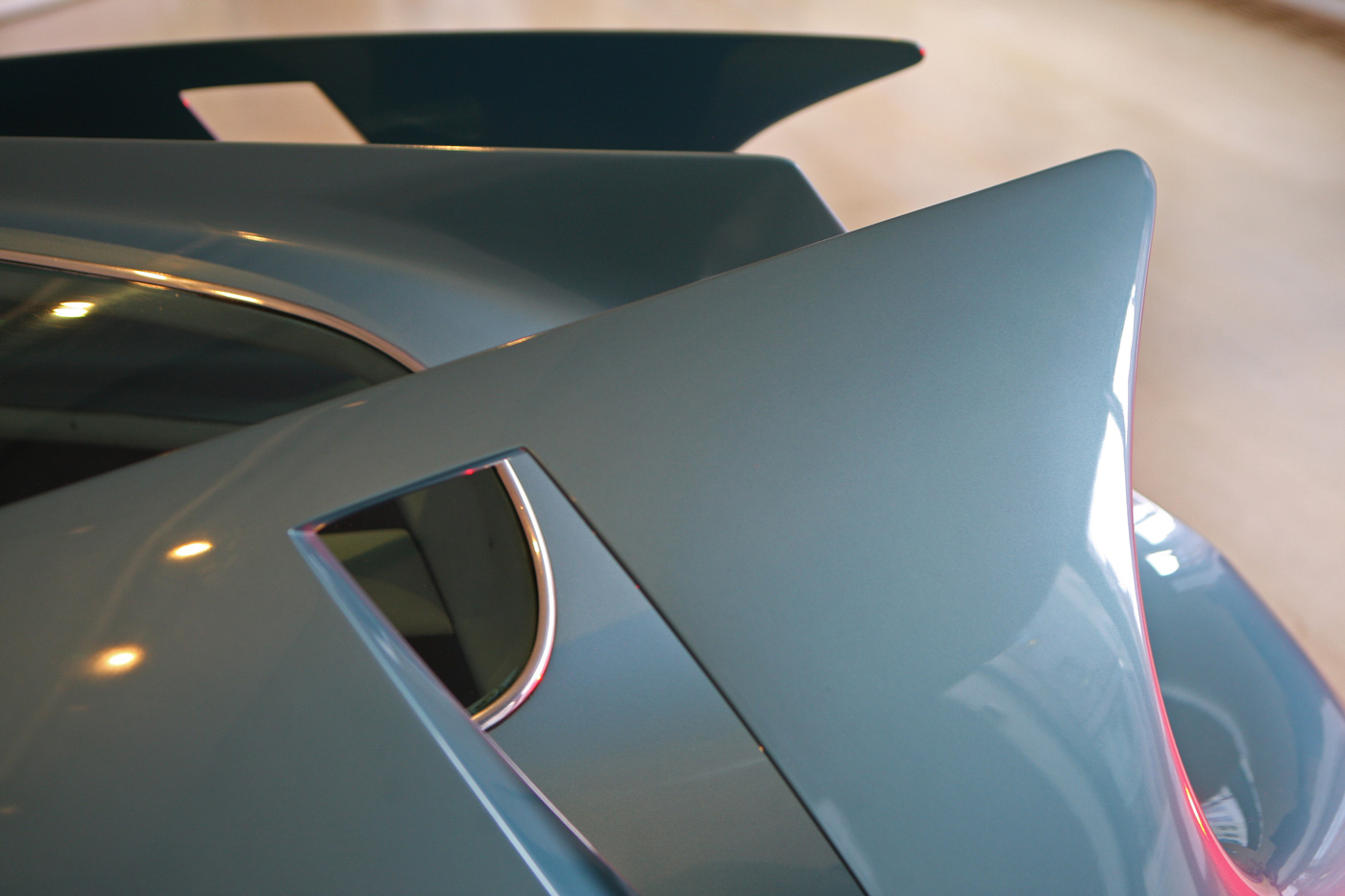
Why are these here? One, to strengthen the rather large fin itself, and two, to allow some of the air to escape that was ‘tunneled’ through the extremely inward curved fins.
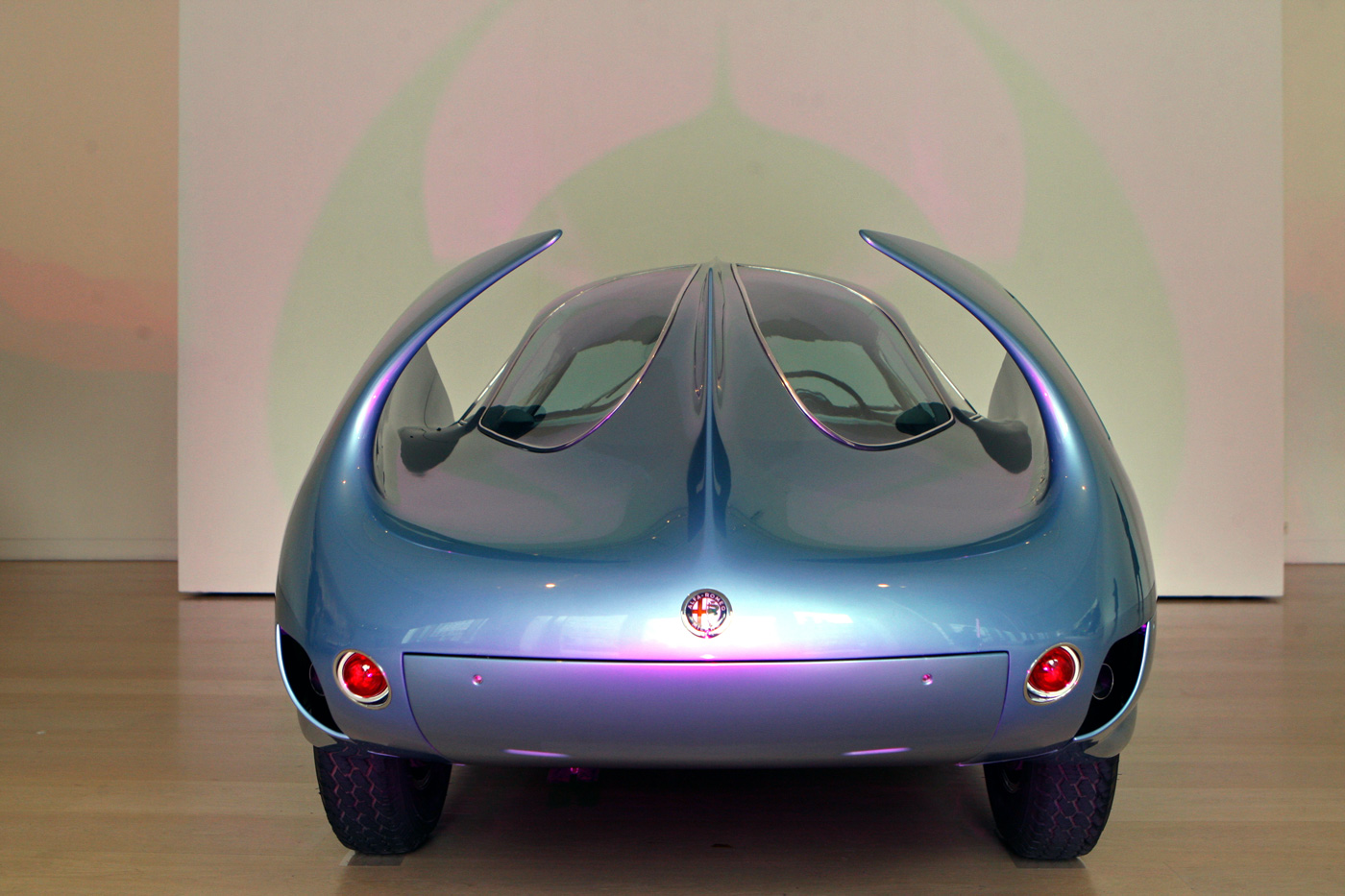
The curved fins had the unwanted effect of virtually eliminating rearward vision. Rather than use twin outside mirrors, a shop decided to simply remove the fins. It was a lot tougher to have them reconstructed!
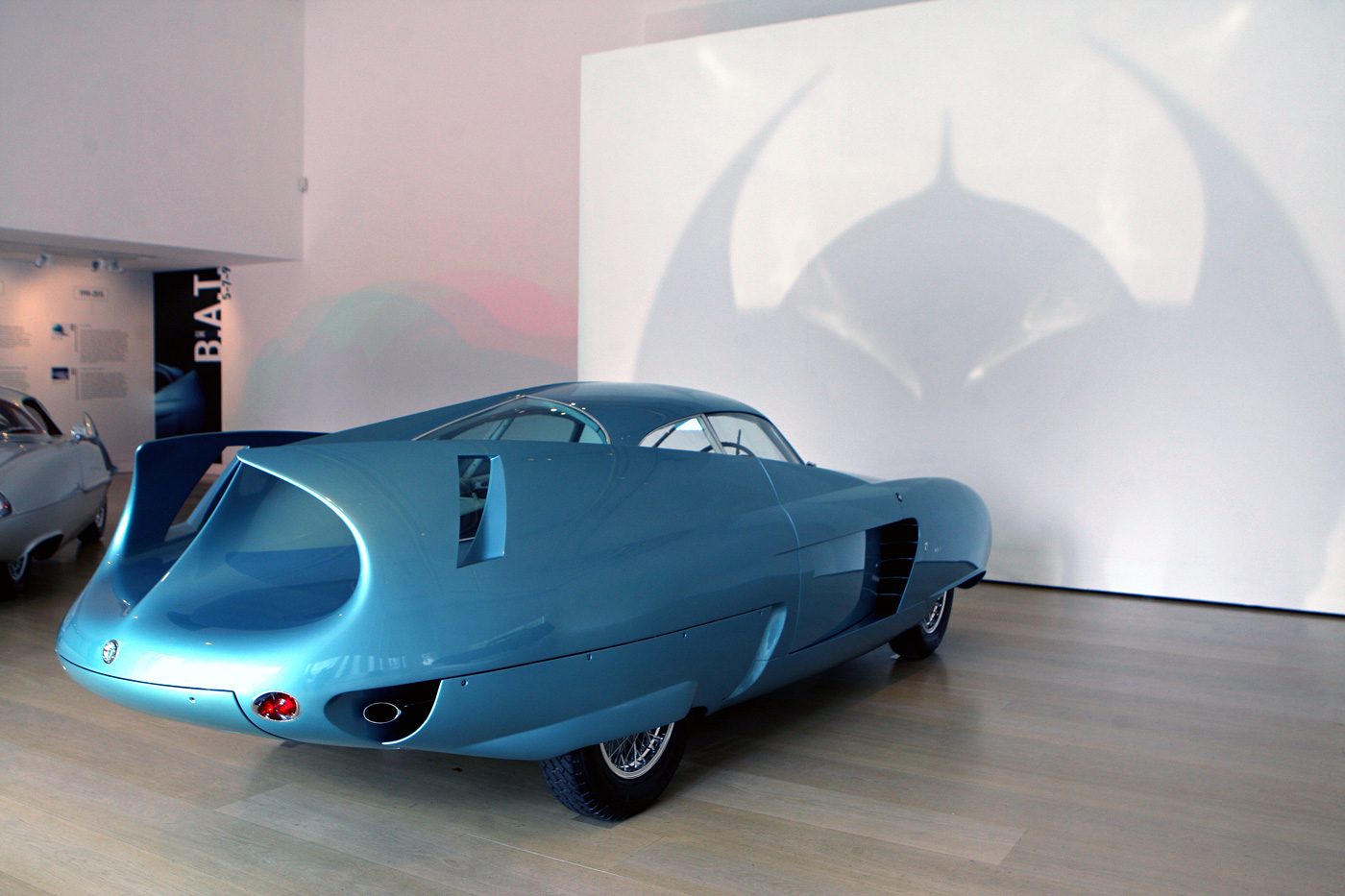
No doubt many will connect B.A.T. 7 with Batman; no such connection exists. But it would have made a better Batmobile than George Barris’s, and really put Bertone on the map!
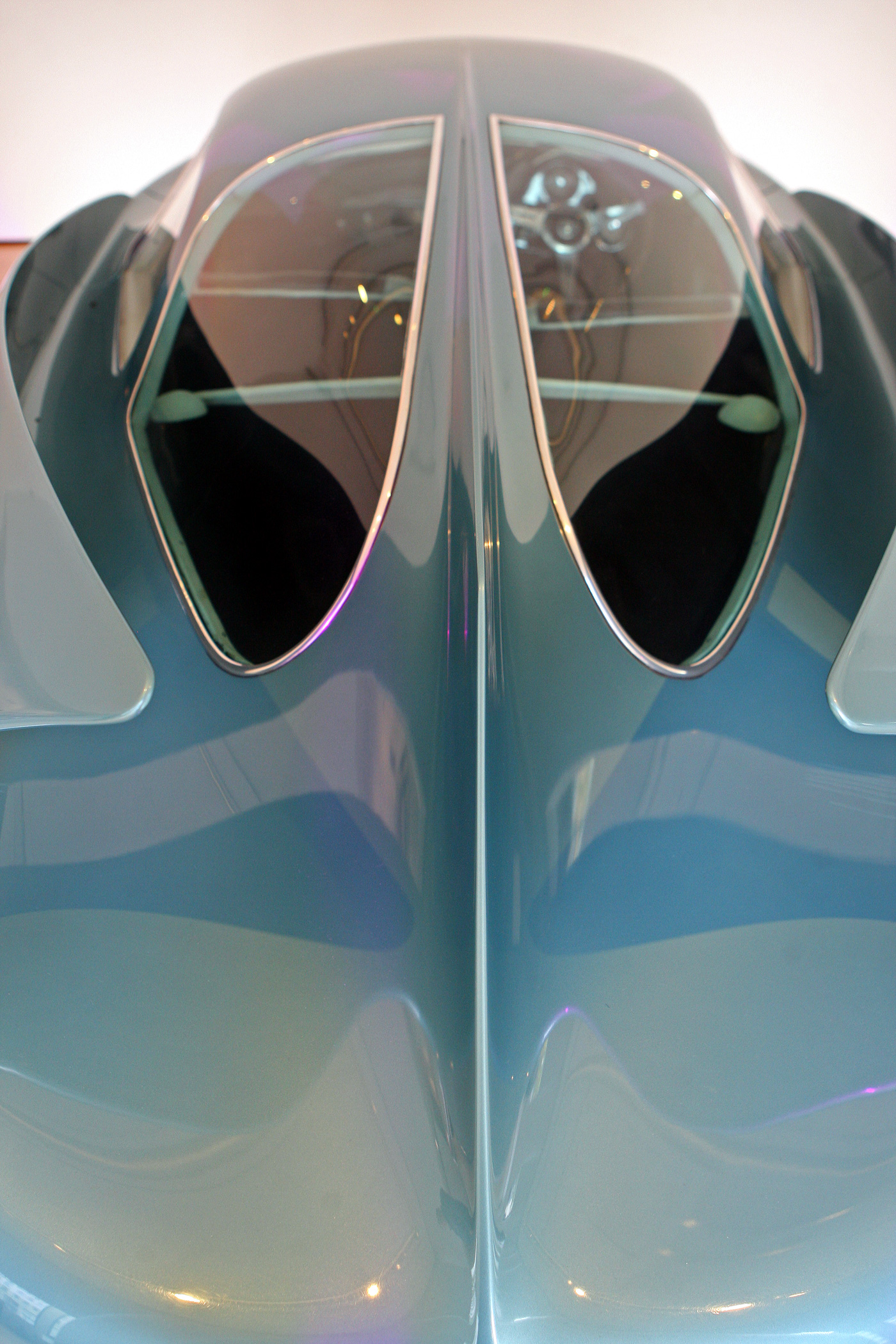
A dorsal fin. Does this remind you of the 1963 Corvette coupe? But what about a sketch done in 1947 by American stylist Don Butler? Click here to compare.
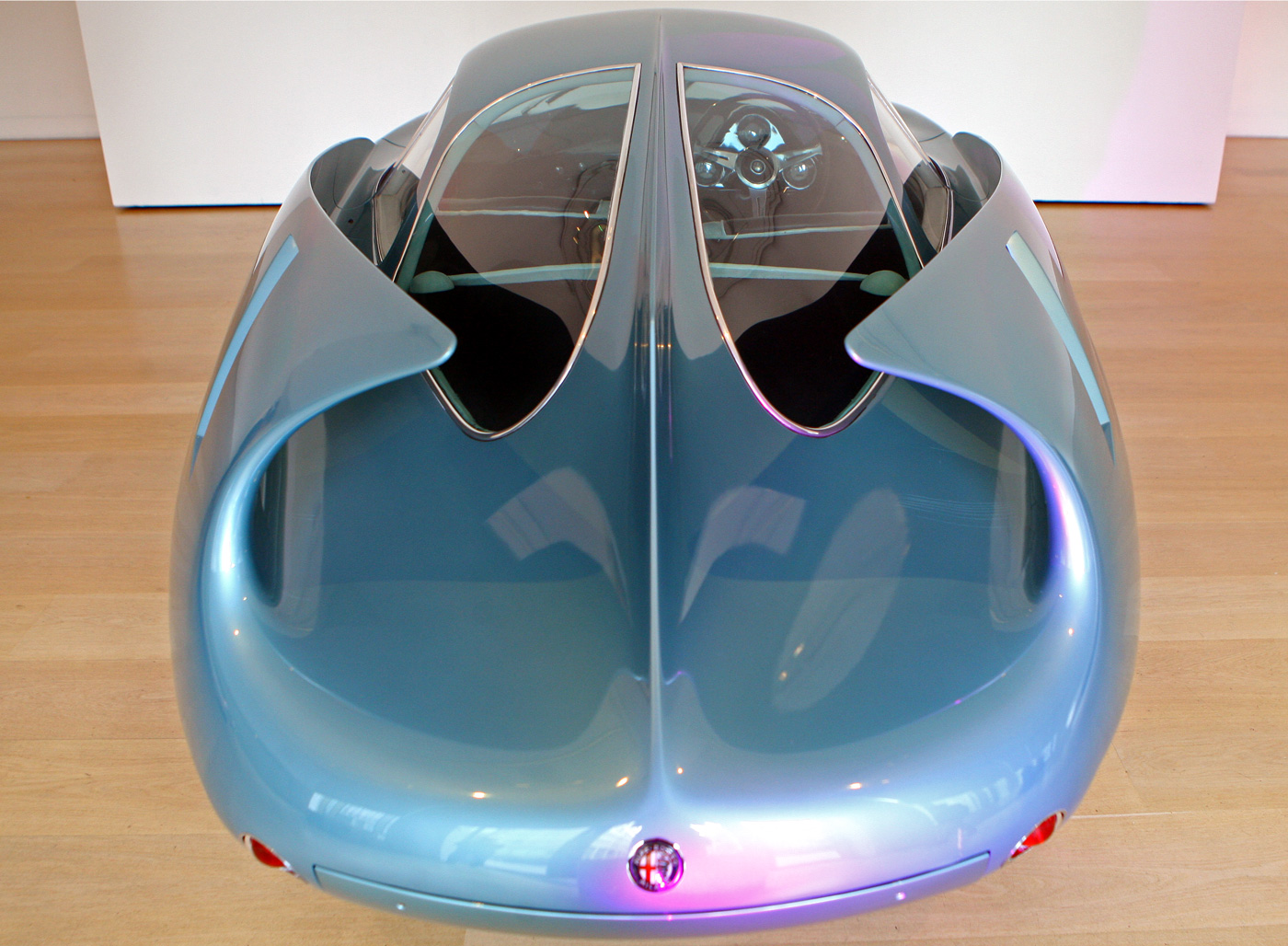
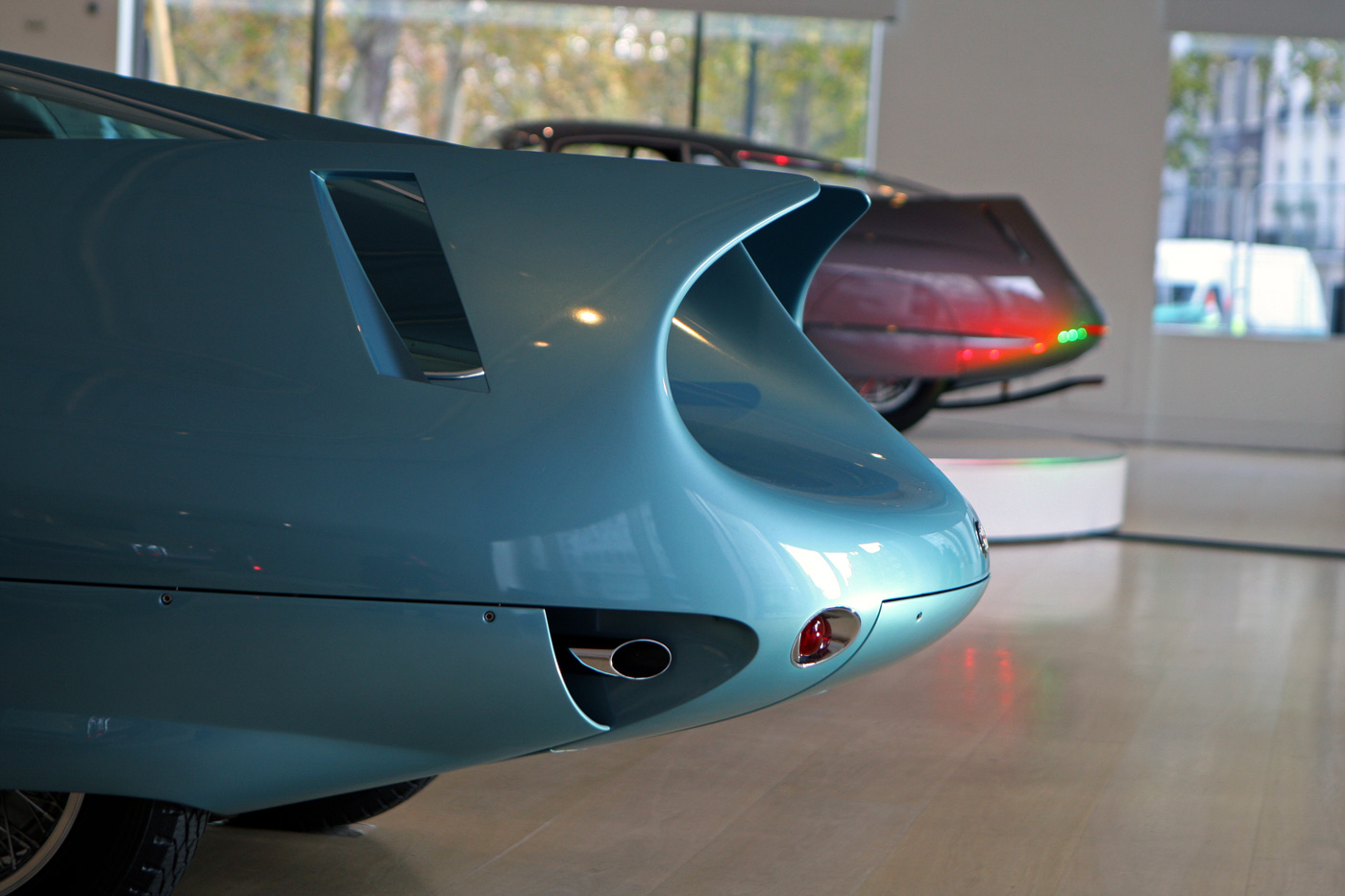
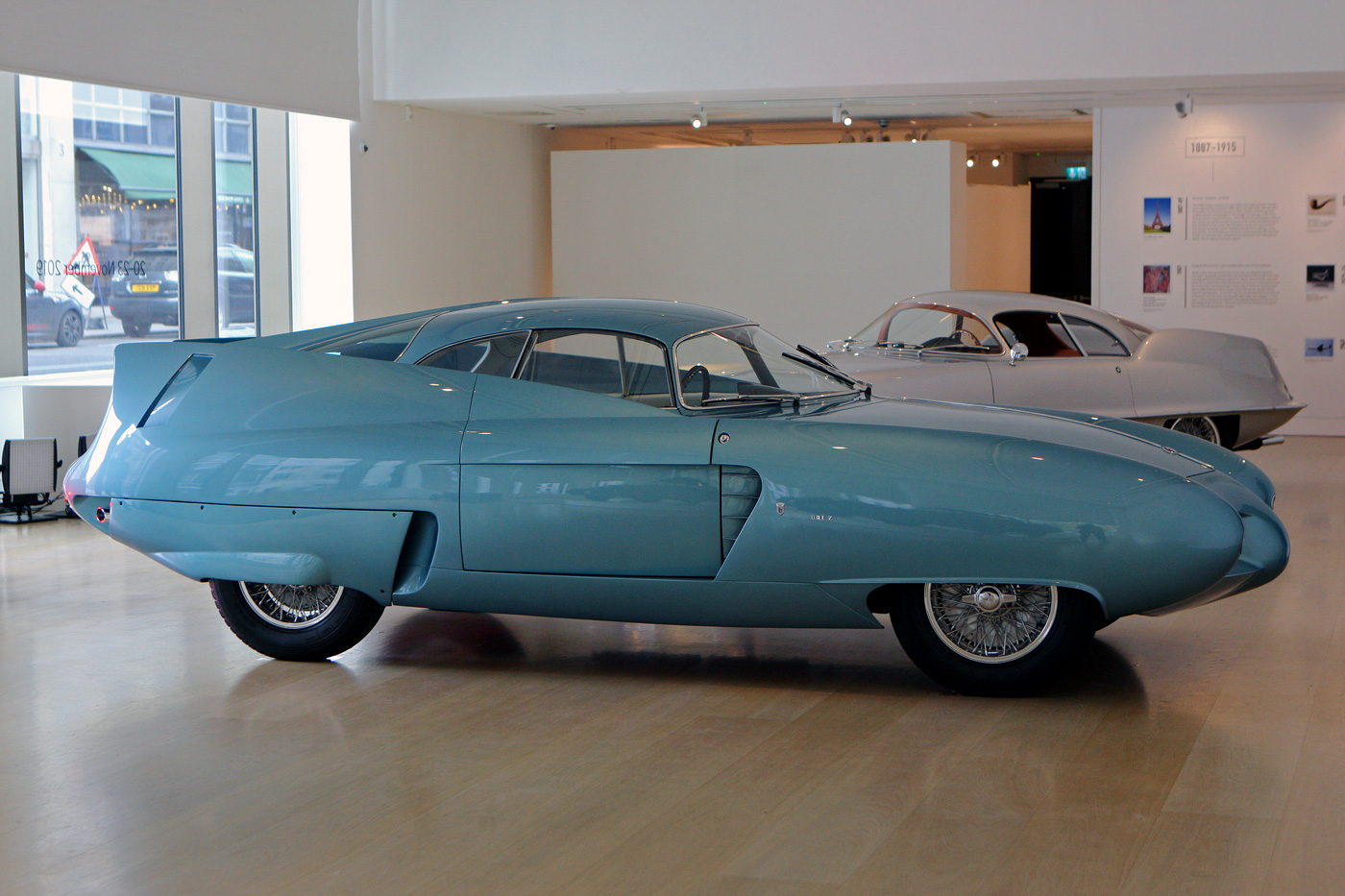
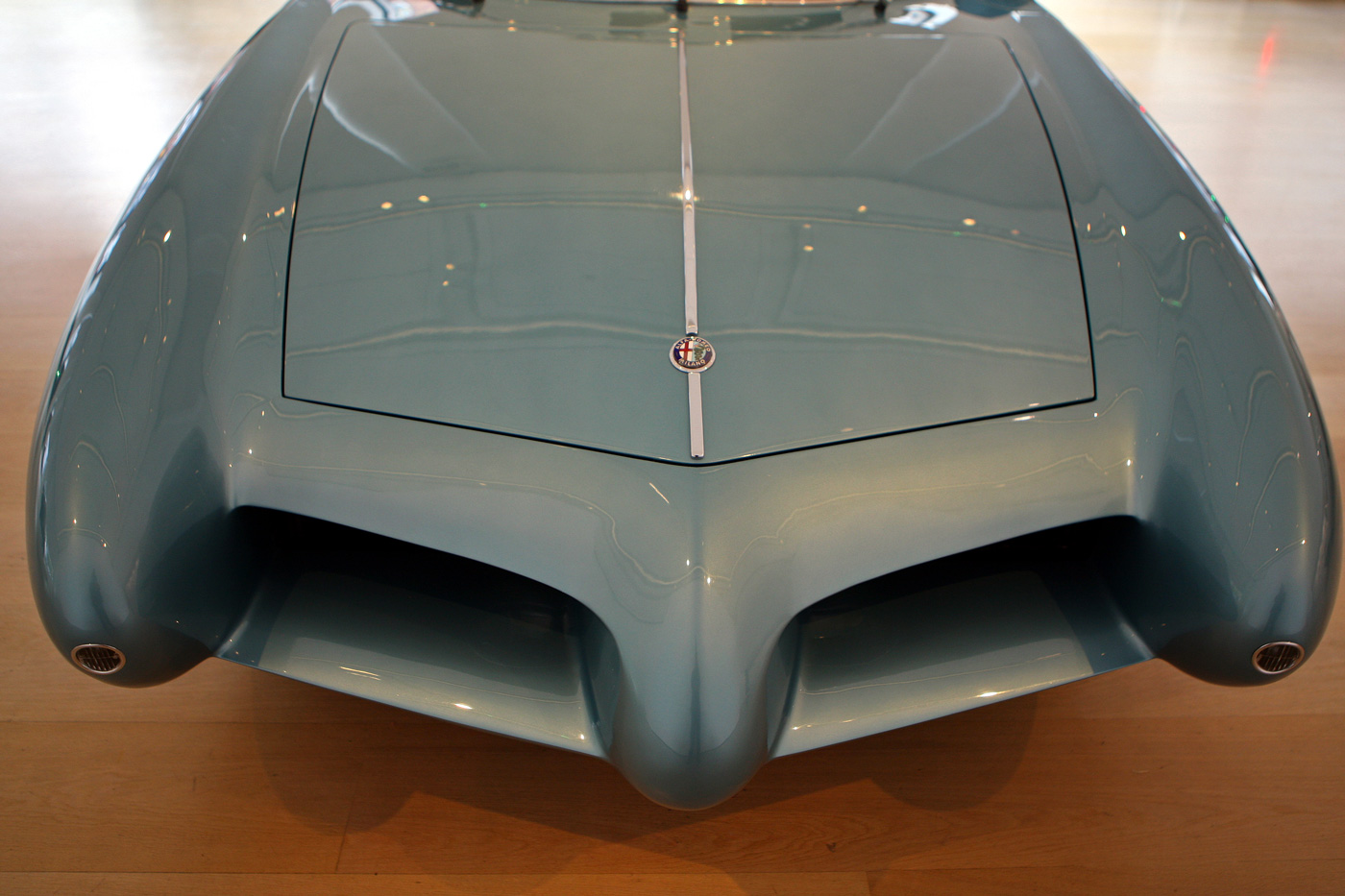
[per Stephen Mitchell who has a 250GTO] “Ed Niles tells me that Sal drove the car from New York to Los Angeles with his wife in the passenger seat and his newborn son Jimmy sleeping in the bulbous contour of the passenger door. Just imagine the sight of that cruising along Route 66 back in the day!”
The rear wing was damaged at the race in Palm Springs or on the way home from the event. Several shops attempted to repair it to no avail. Thus the second wing was removed as that was the simplest of fixes to make.
BAT 7 was used for publicity, TV and marketing given its still futuristic styling and was shown at Pebble Beach in 1956 (or 158?) with the wings removed with 2-tone color. It was used for irregular transportation but was driven with gusto for numerous years.
On the Facebook page dedicated to Franco Scaglione, there are numerous historical pictures of BAT 7. There are pictures of Al Williams and his wife when they owned it. Numerous pictures of it in San Leandro at the dealership and in the San Francisco area pre-1960.
Facebook page dedicated to the designs and automobiles of Franco Scaglione > https://www.facebook.com/groups/FrancoScaglioneDesigner/
On the way to meetings in Turin, Arese and Maranello in 1992, I was advised by Sig. Panico at Bertone to fly in via Paris. “You can take the TGV from there.” Bertone had put on a show of their most significant prototypes at the old Motobécane factory, that was then an automotive museum. All three of the aero Tecnica berlinas were there and the Lancia Zero, as well as the very lovely wooden buck for the Giulietta Sprint. Yes, there were more displays, but between these five you could spend an entire evening before a glass or two of wine was required to notice the others. The displays were very well staged, the lighting superb and the setting intimate without being claustrophobic. The speculation was that the Japanese collector, without trying to draw much attention, was having a bit of financial agro and was subtly reintroducing the berlinas to the collector market.
In the mid 1990s I was reminded of this Parisian interlude when I became very good friends with Ken Shaff, the father of the California Mille, and the always fun New Year’s Day Rally. Ken and I were having lunch near the offices of his Yachting publication, on Alameda island, when he told me about driving his daughters to school in the ‘finless’ bat. Back at the office he showed me a photo, grainy black and white, of the girls standing by old number 7. Even in their pleated school skirts there was a Flash Gordon quality to that old photo.
An extraordinary work of art.It is unfortunate that most people do not know about Alfa Romeo’s extensive car heritage.